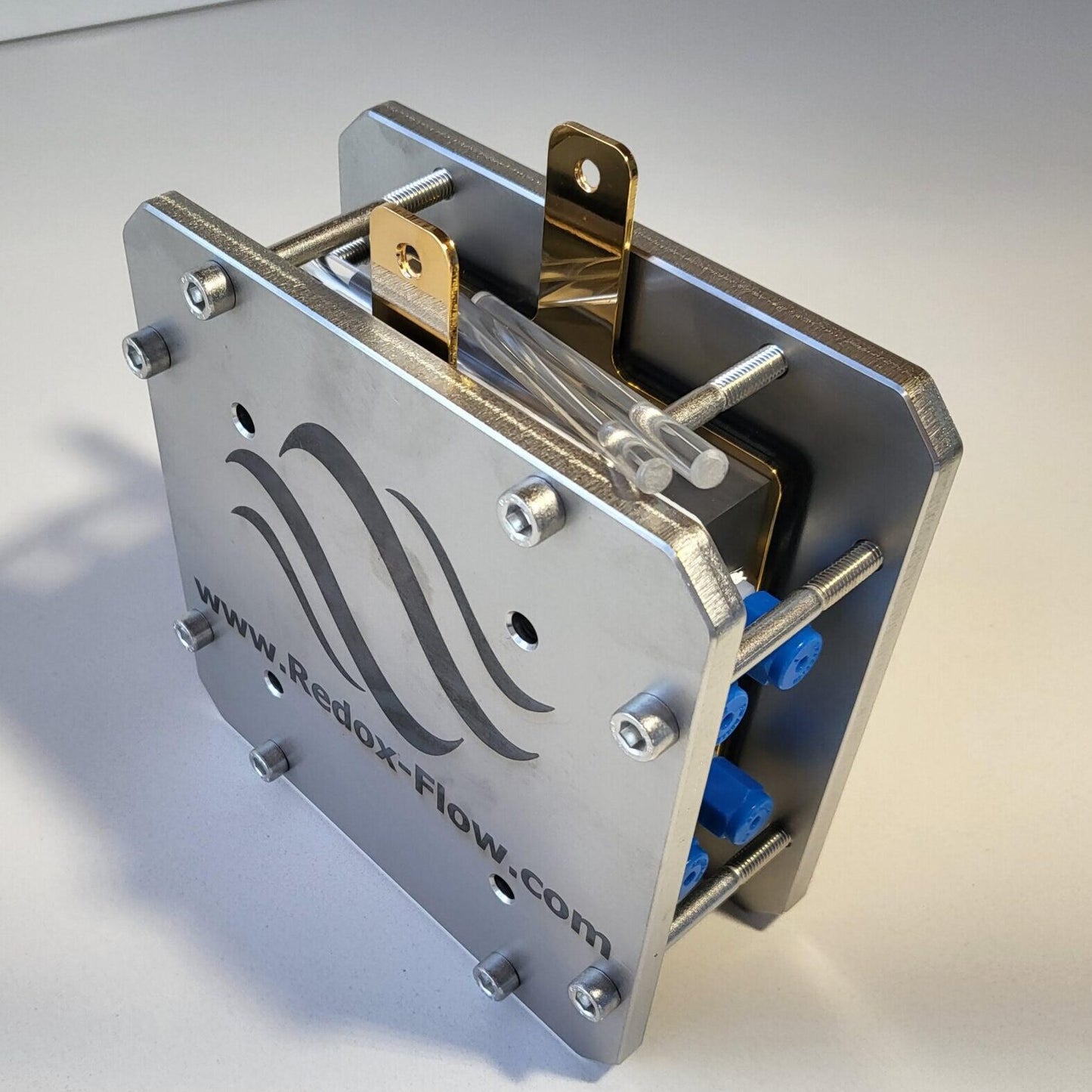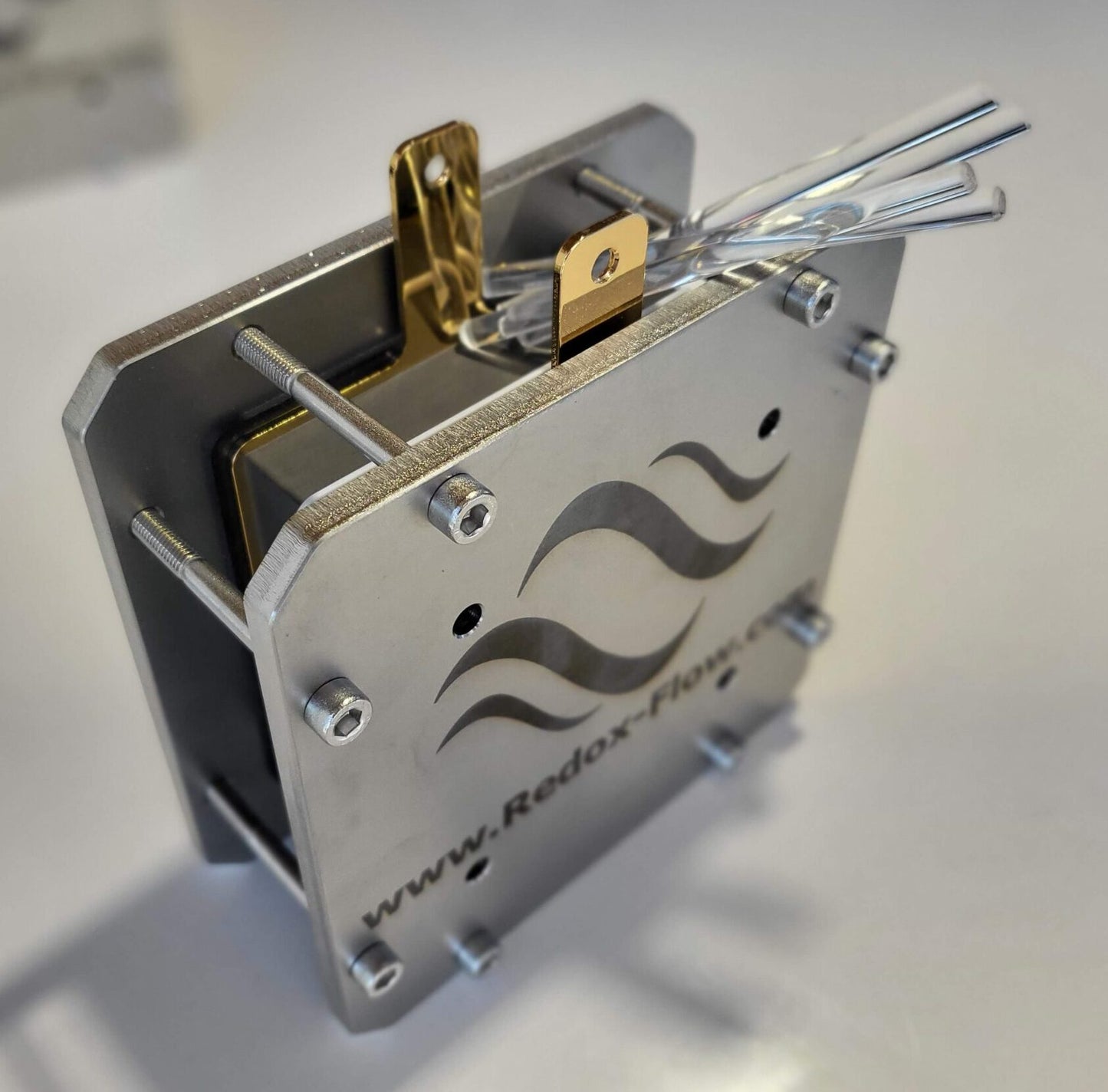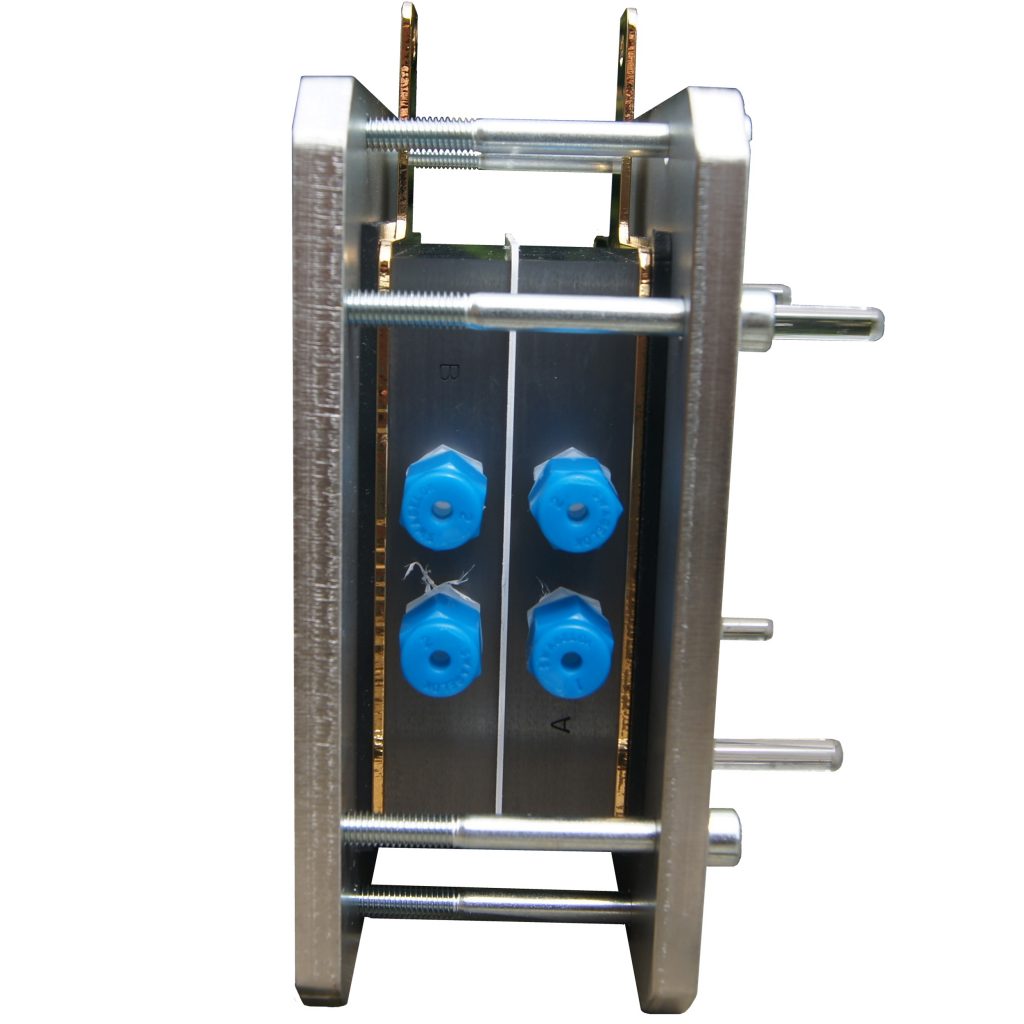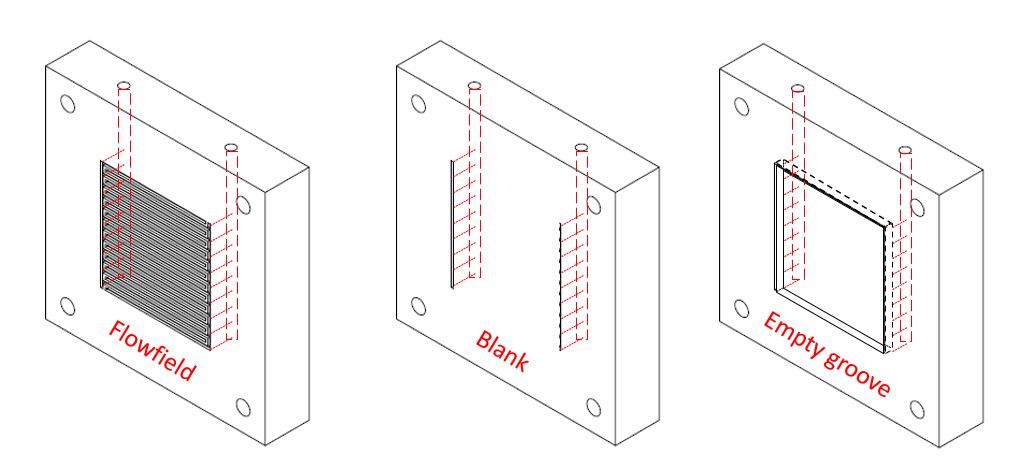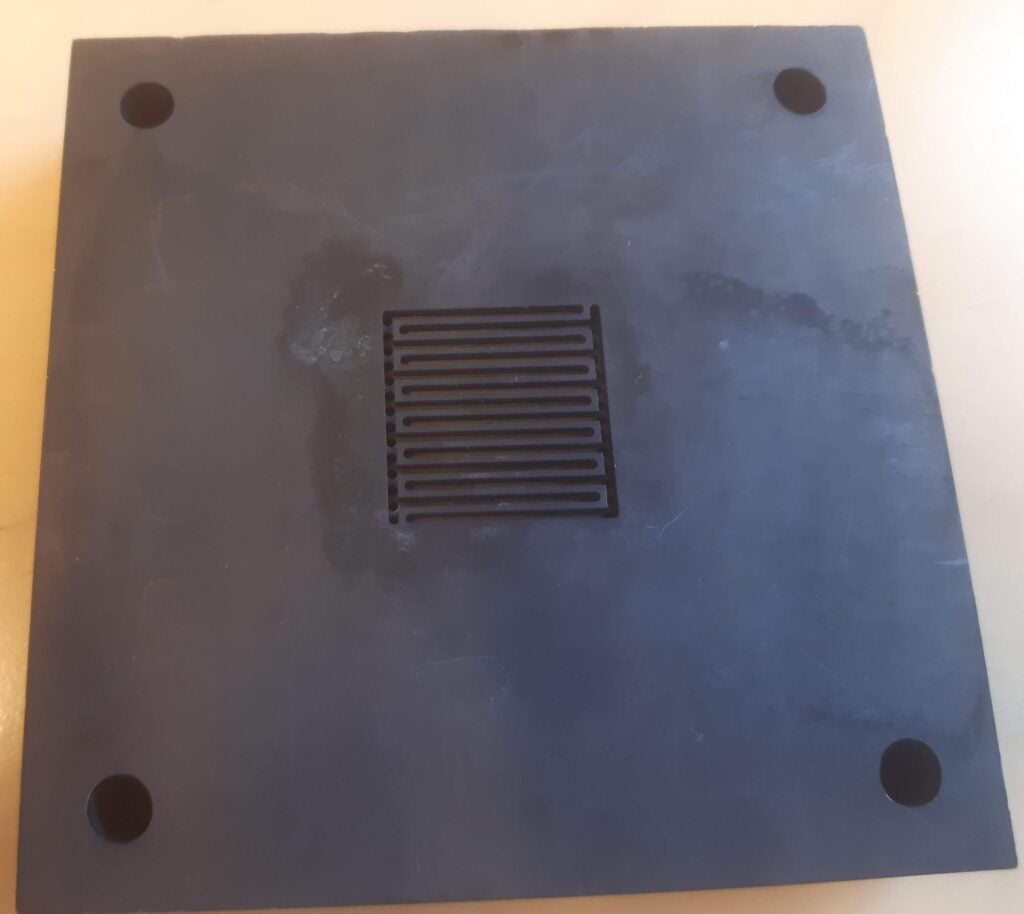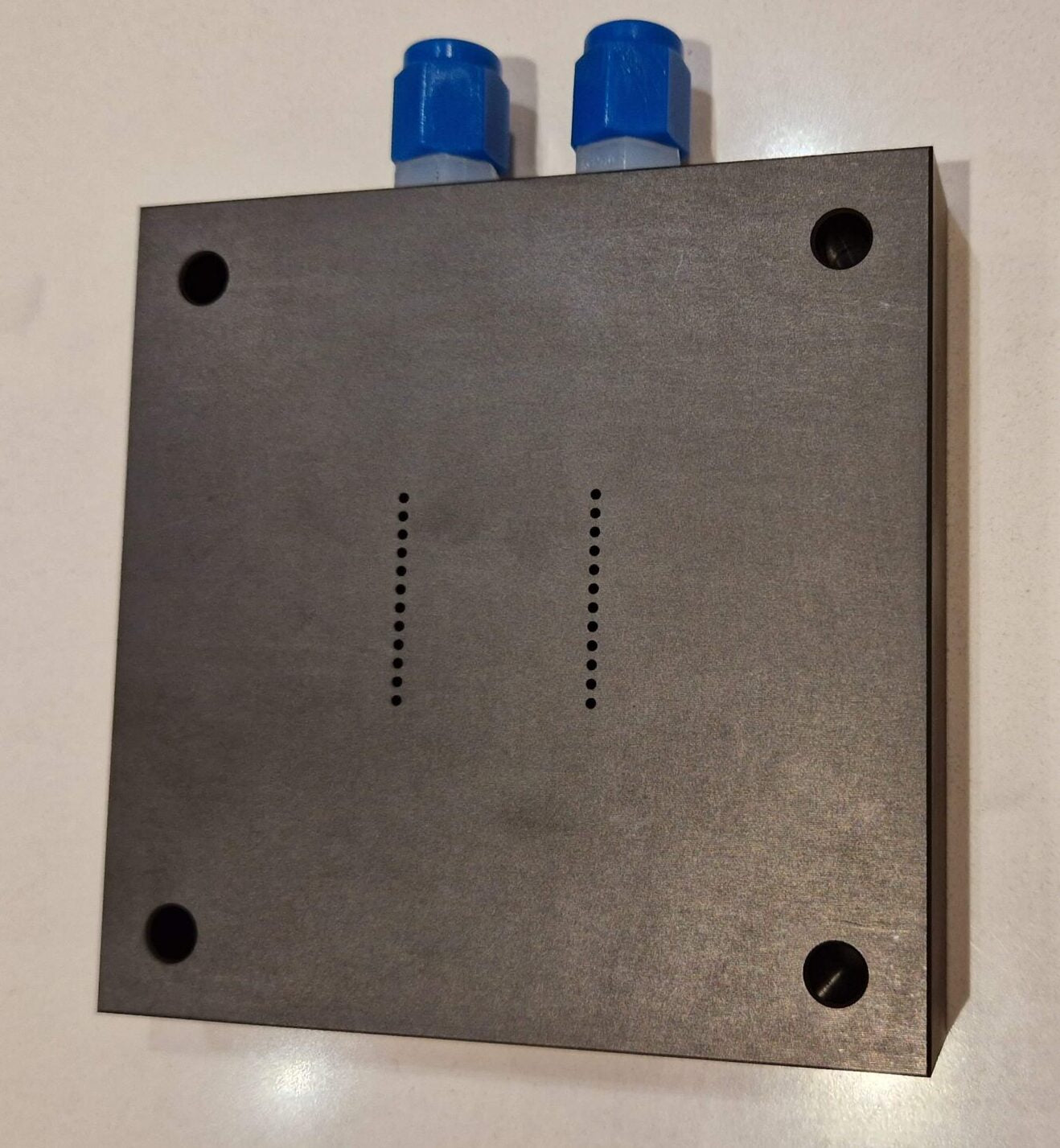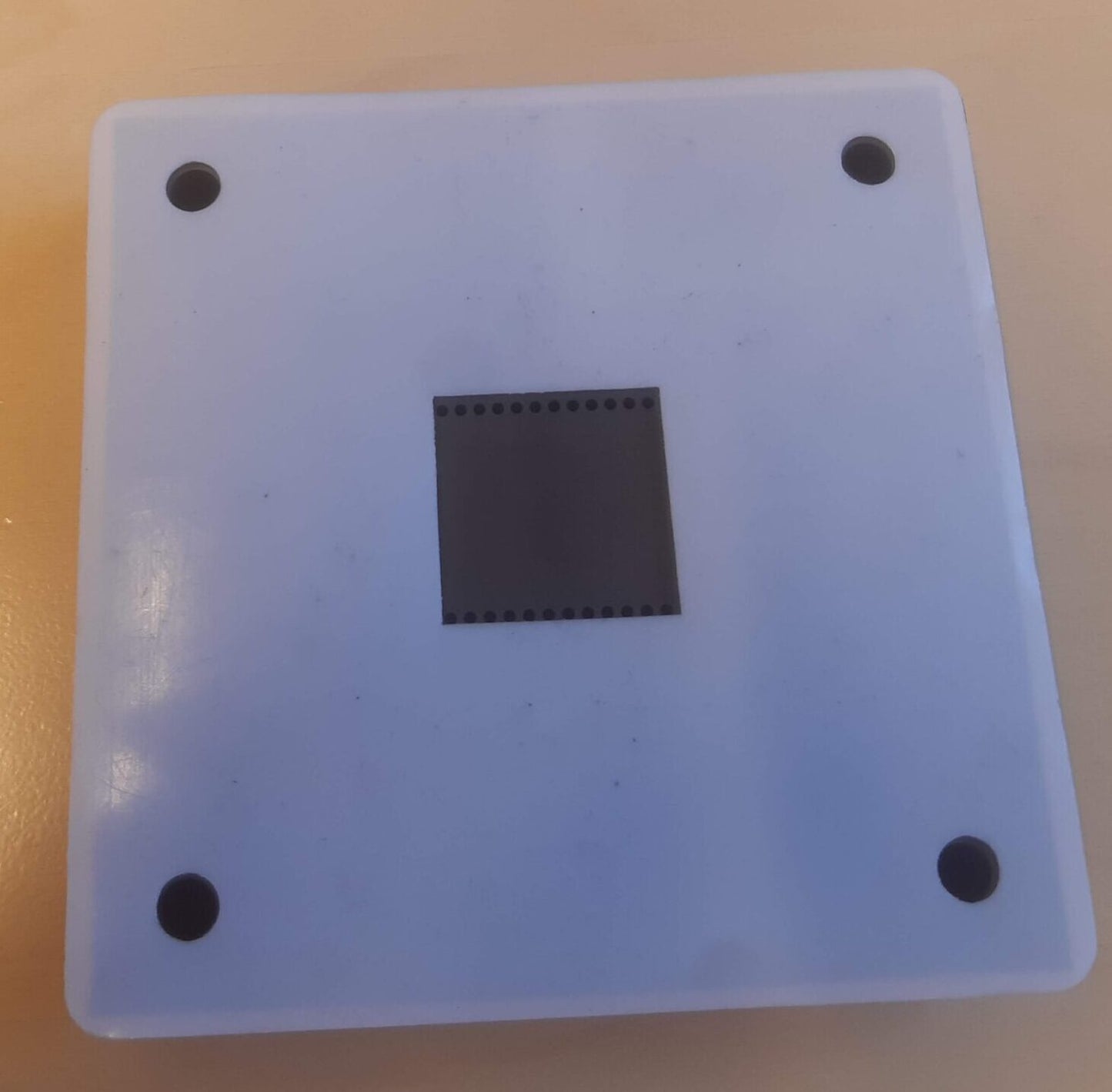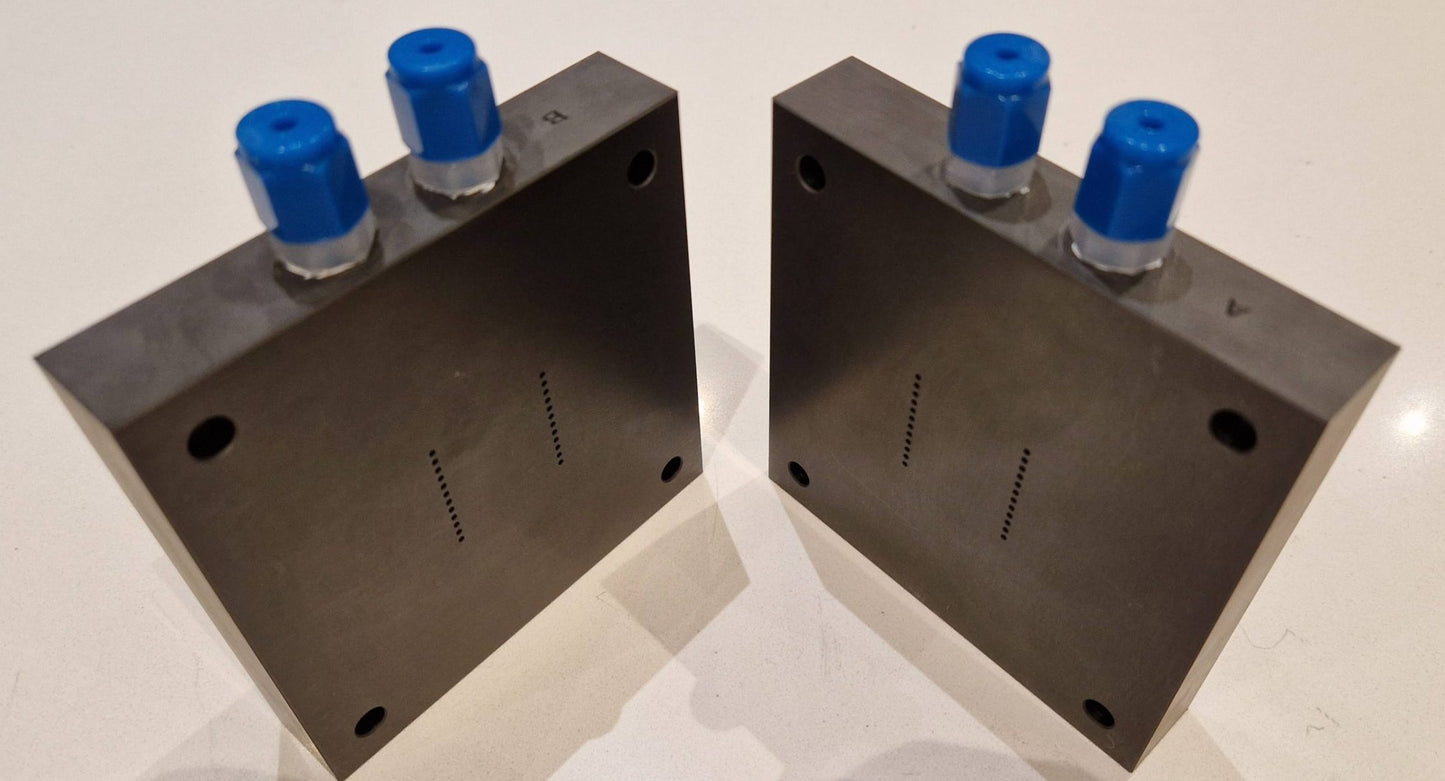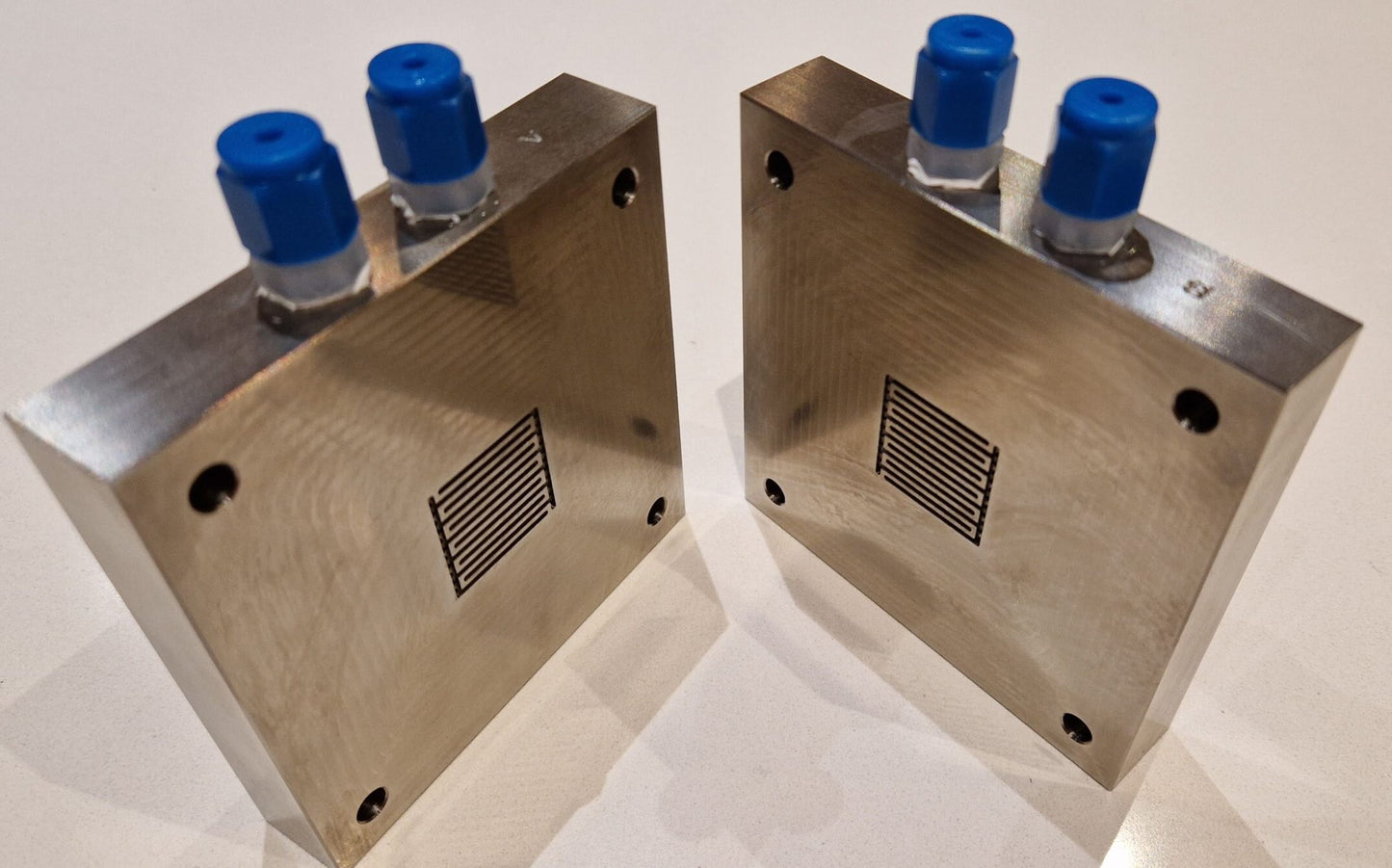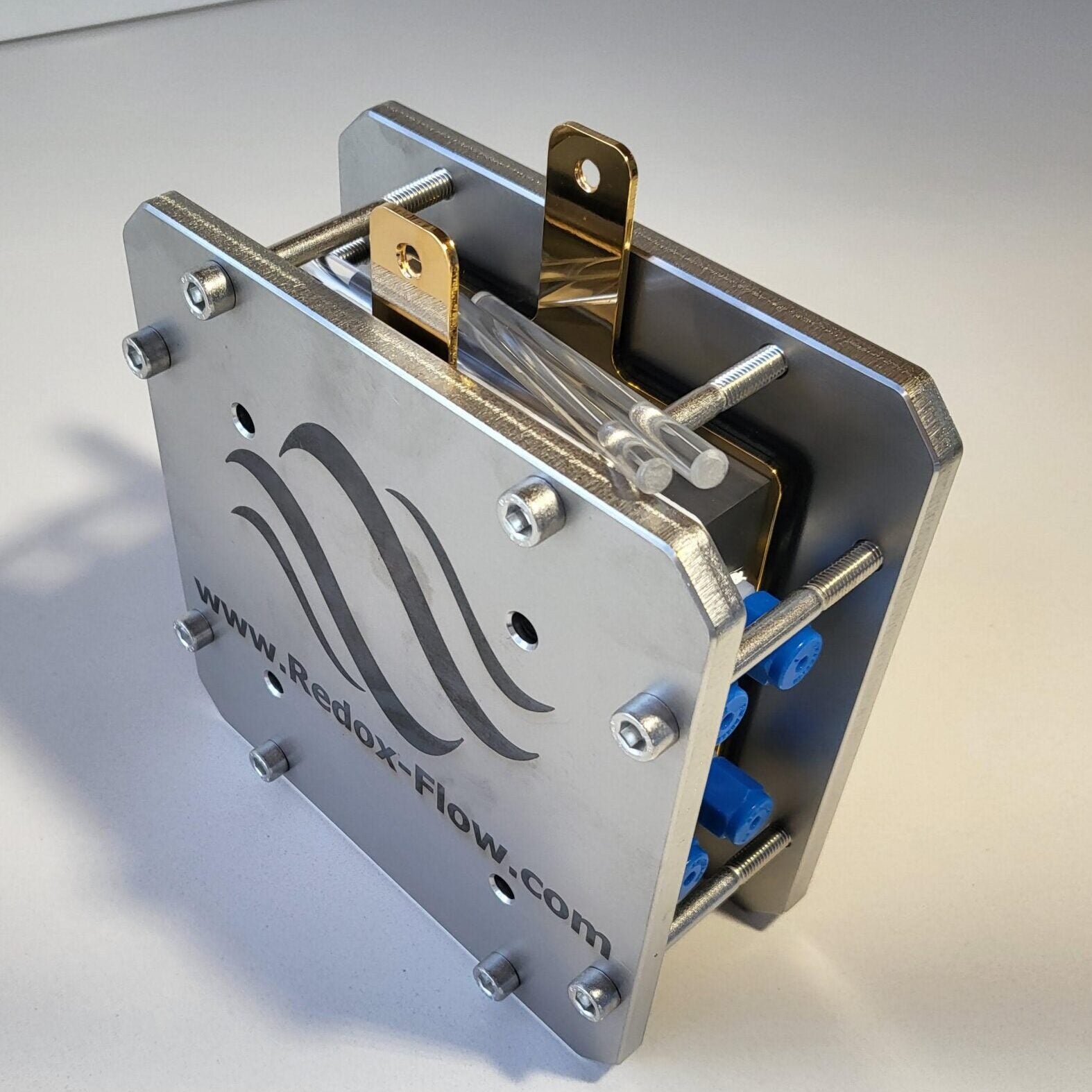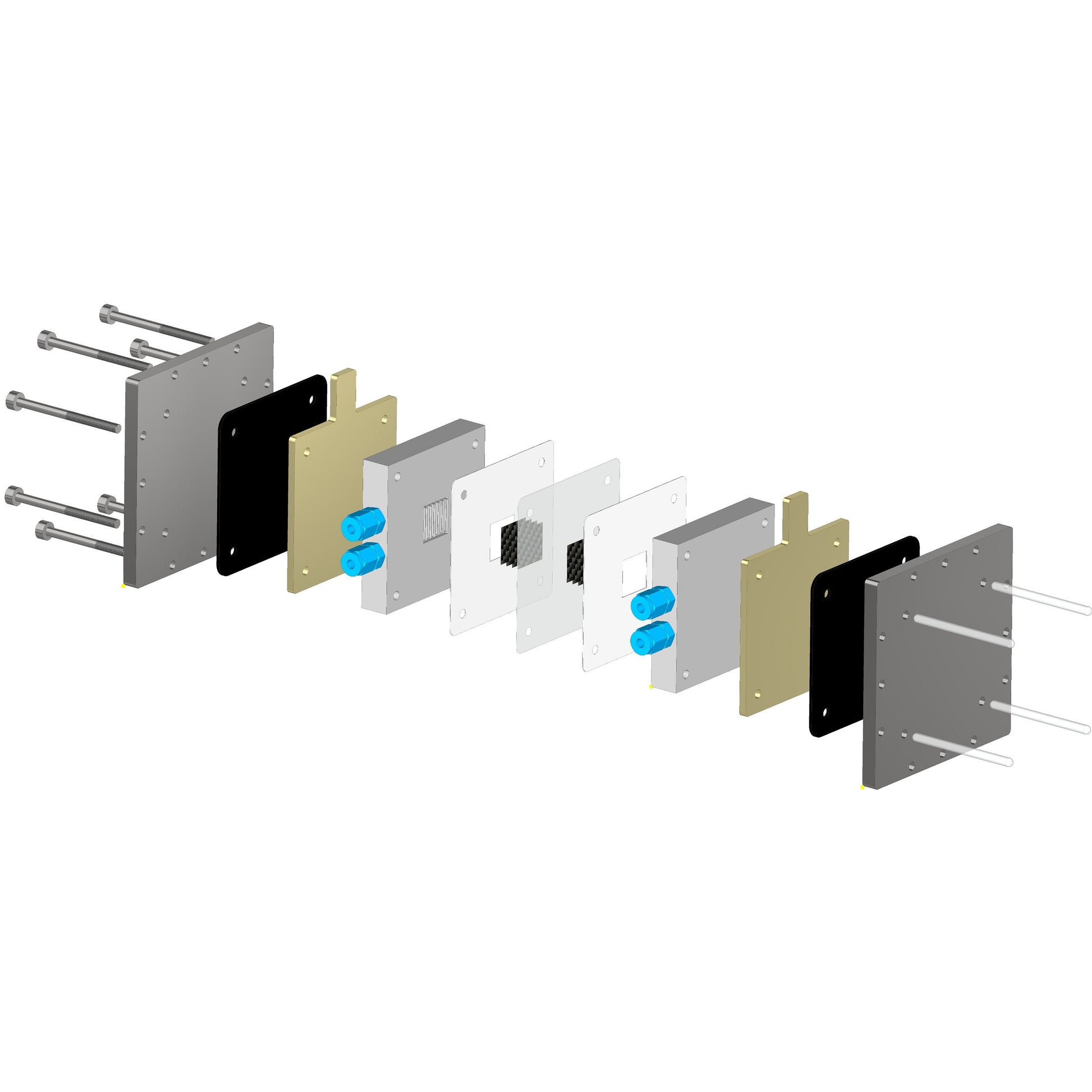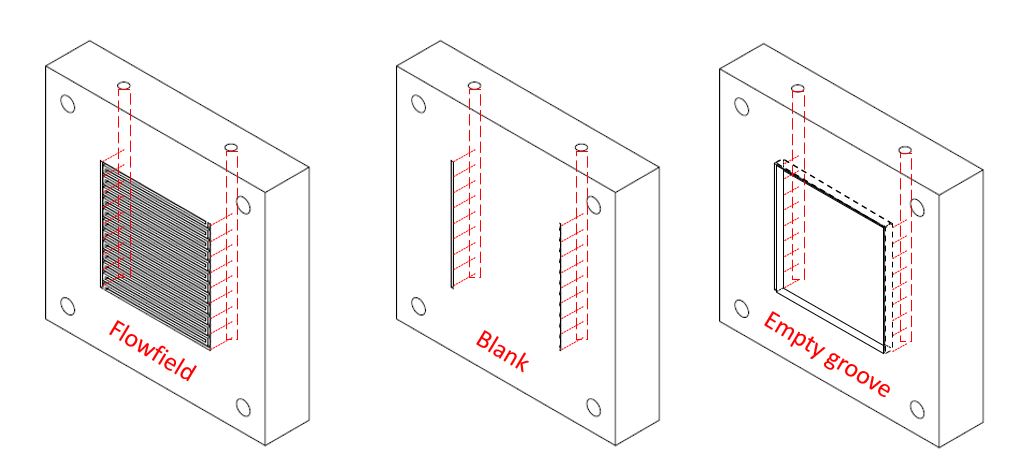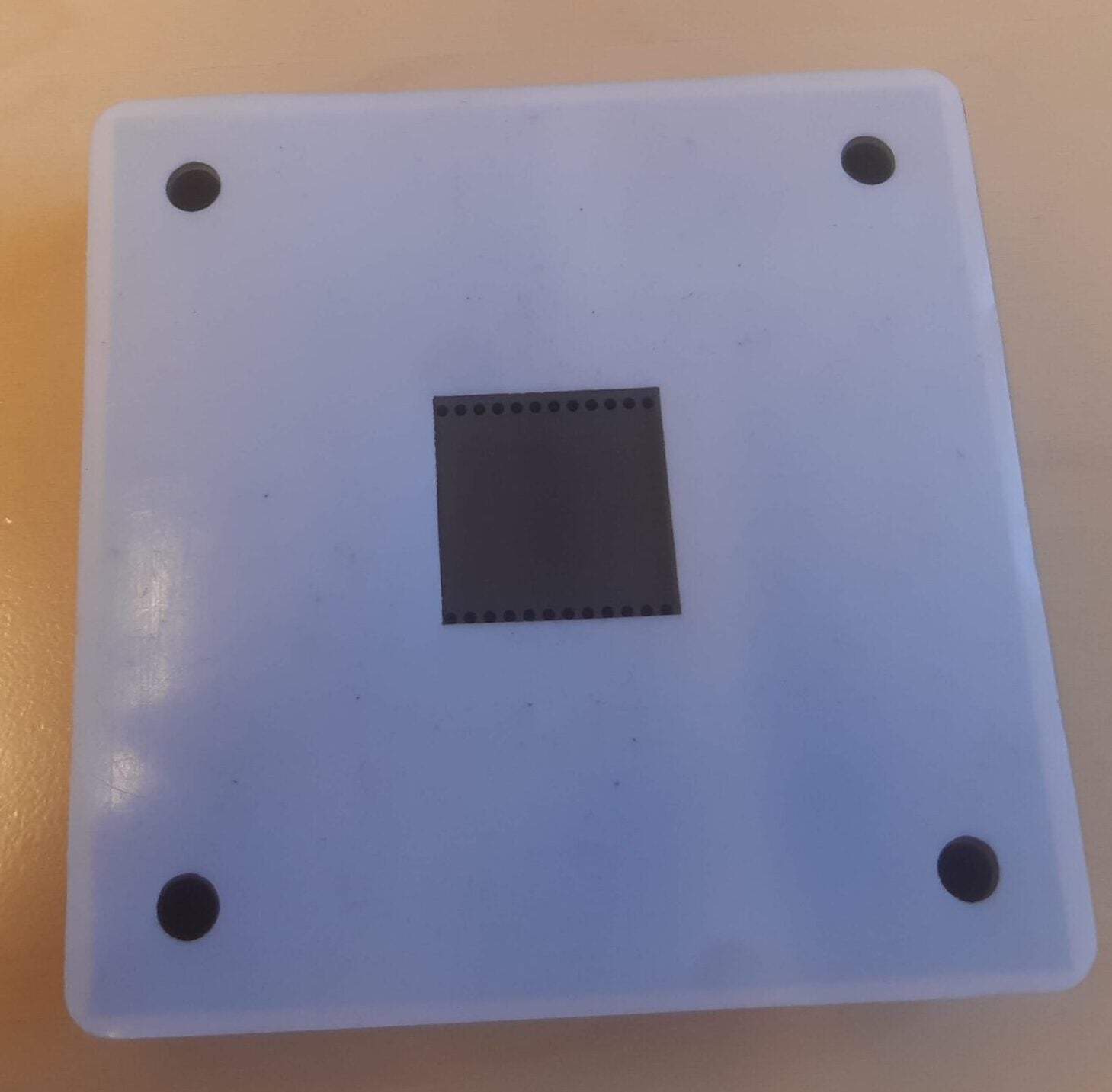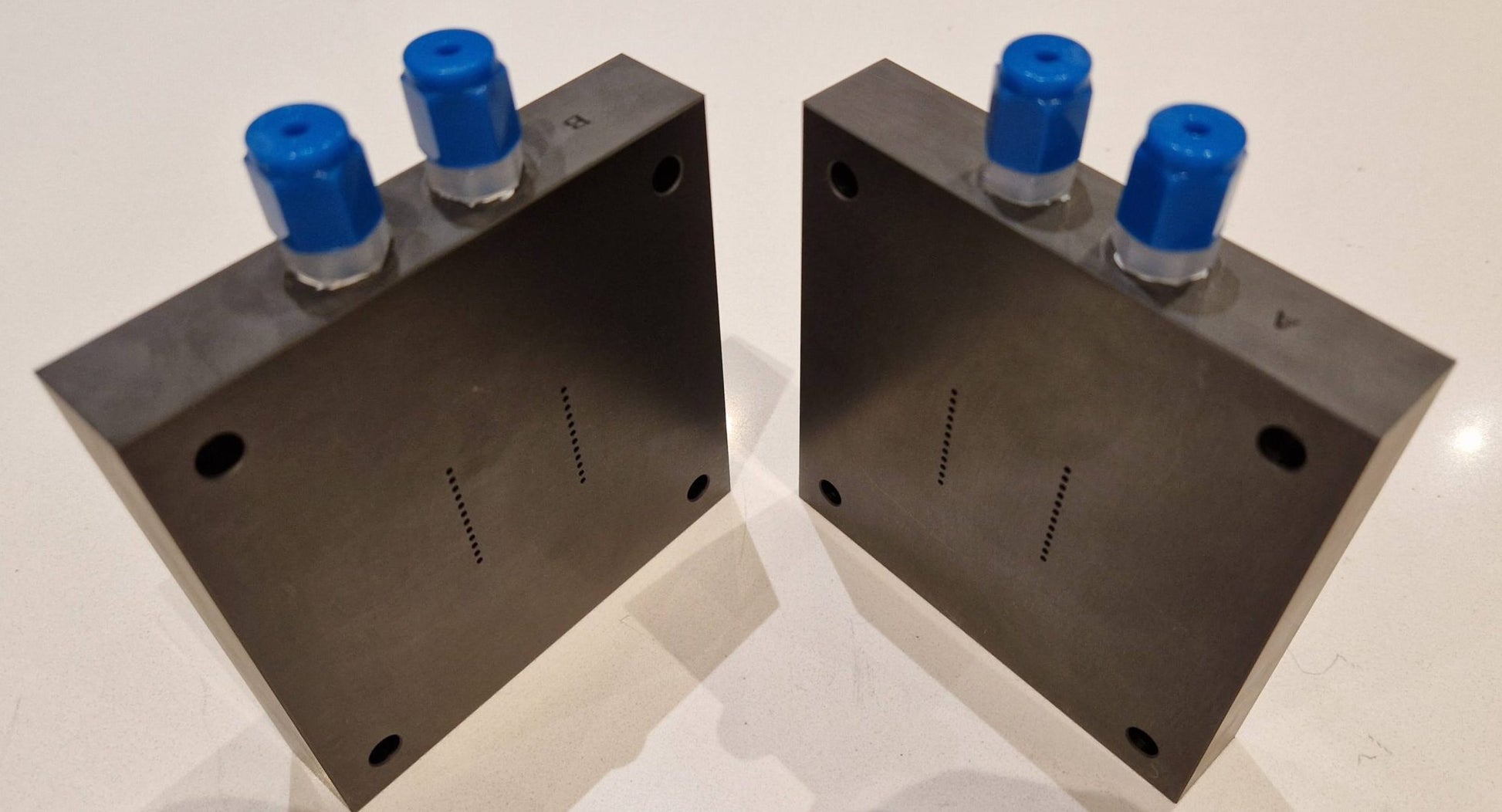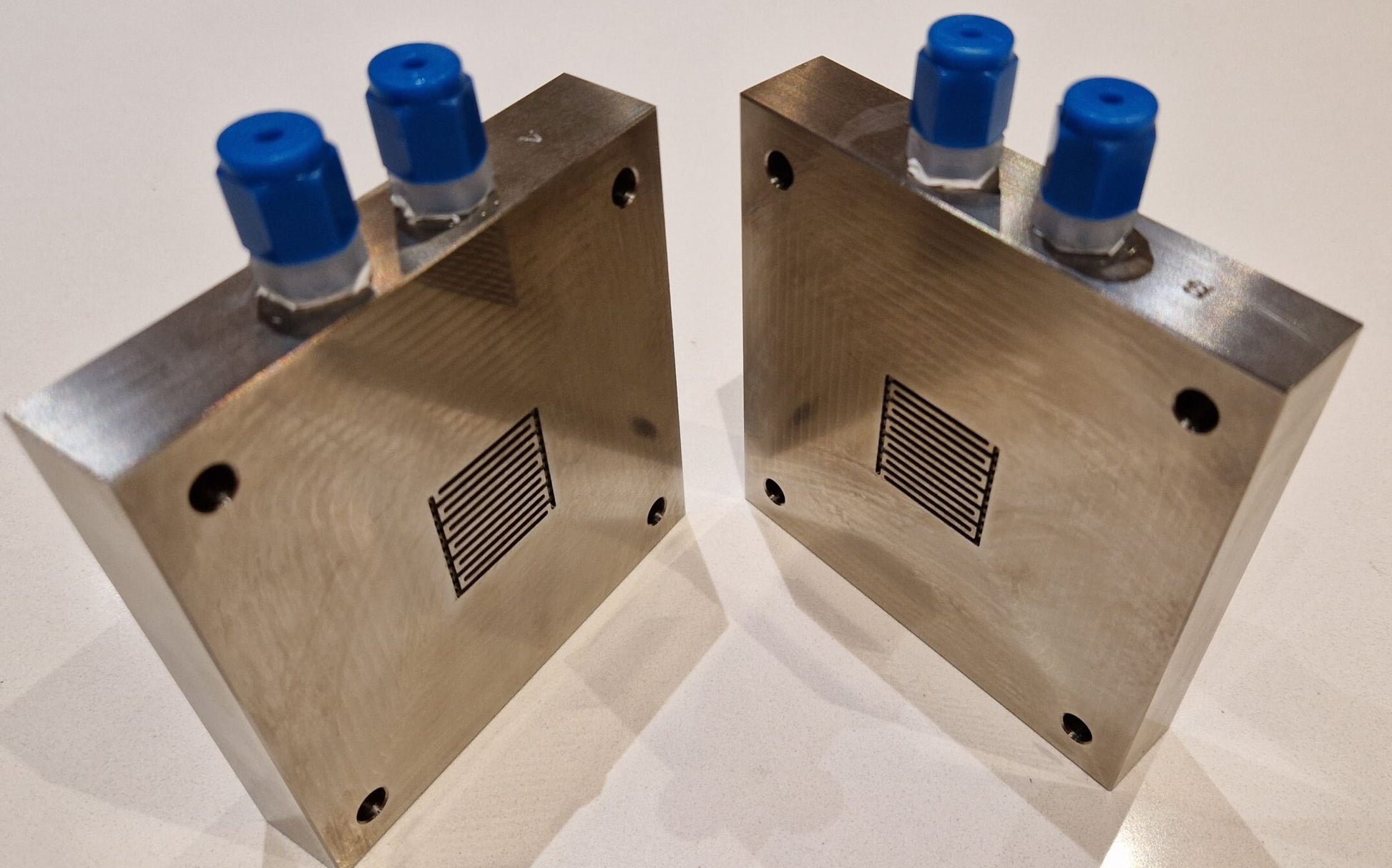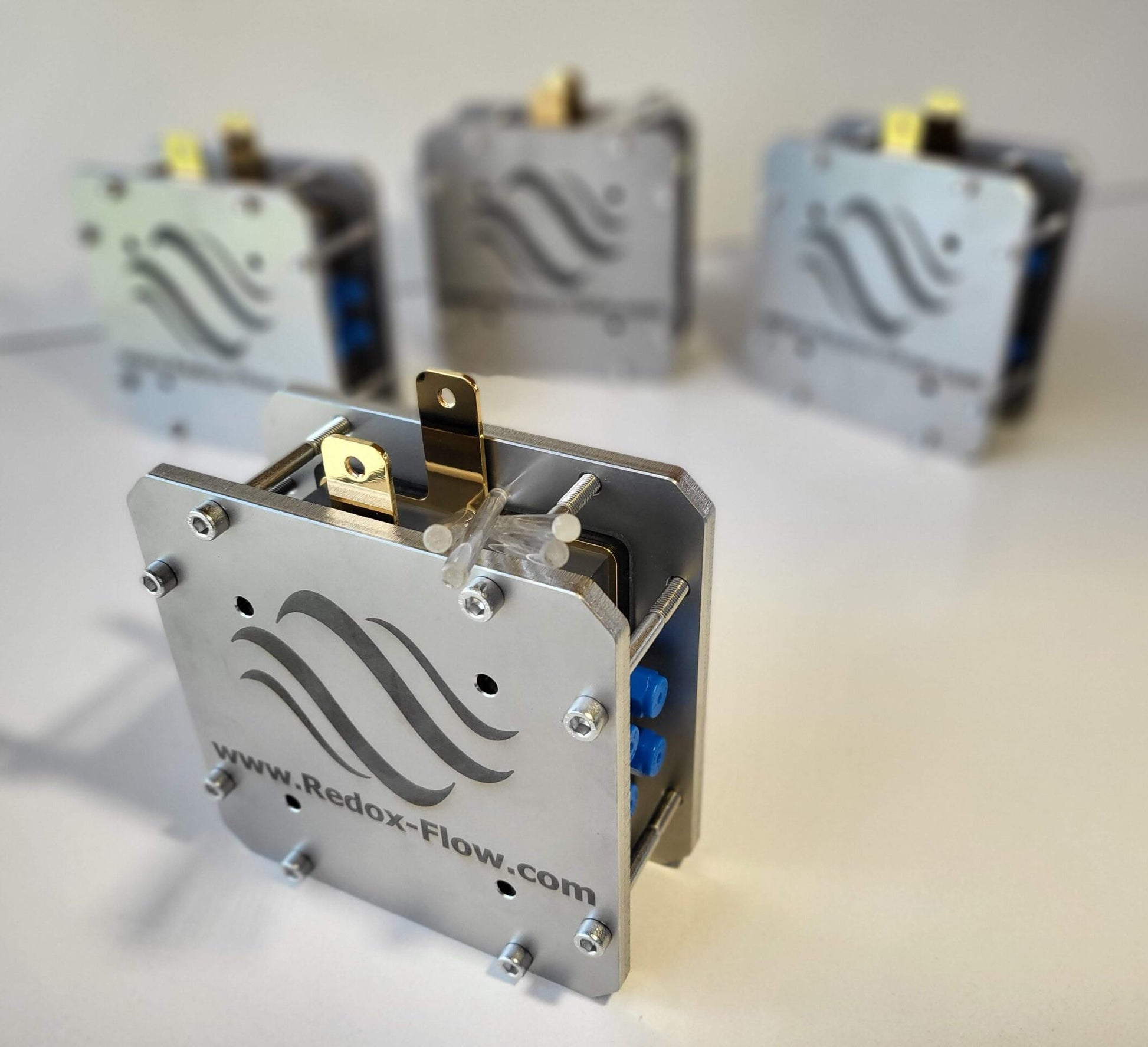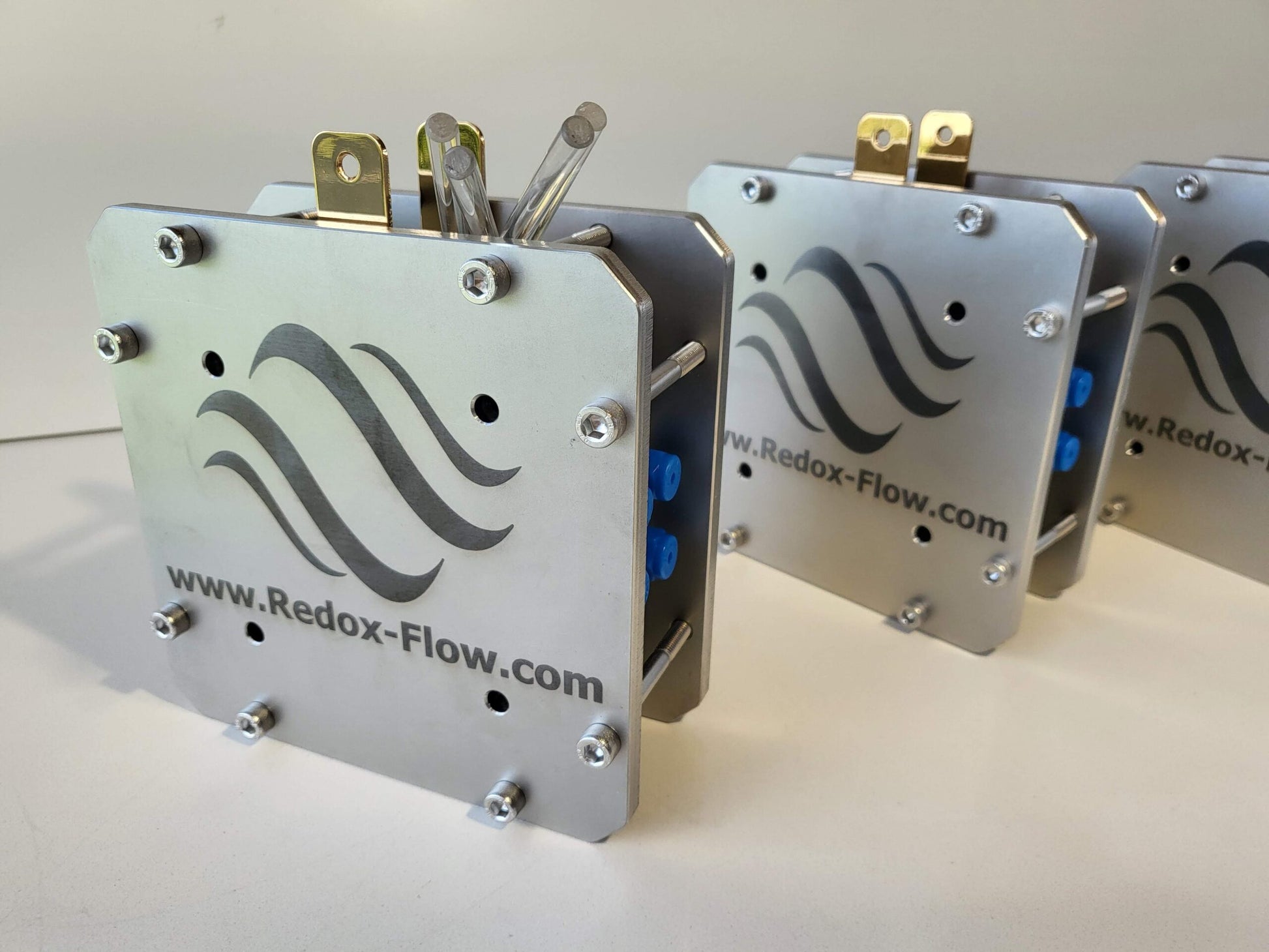Redoxflow
A-Cell – Redox Flow Battery Test Cell
A-Cell – Redox Flow Battery Test Cell
Redox Flow Battery Test Cell
Redox Flow Battery (RFB) lab cell for test of vanadium flow batteries or other battery chemistries.
Highlights
- Fast assembly
- Optimized flow field pattern
- Redox solution is not in contact with metal parts
- Variable electrode thickness
- Carbon felt electrodes option
- Flow Fields can be custom made
DESCRIPTION:
This flow cell is intended for redox flow battery research and development. Alternatively it can be used an electrochemical flow cell for test of membrane properties or similar. It comes with either 6.25 cm2 or 25 cm2 active area. The design has focused on ease of use and fast assembly/disassembly making it ideal for research applications. The cell consists of two mirrored half-cells separated by a membrane. Through each half-cell electrolyte solution is circulated and the electrochemical reaction takes place in electrodes pressed against both sides of the membrane. The current passes through the current collectors and graphite blocks. There is no contact between metal parts and electrolyte solutions. The interdigitated flow field in the cell is optimized for RFB applications with minimum internal resistance. For specialized flow fields or carbon felt electrodes and other active areas please contact us.
One of the unique features is that the A-cell also can be connected the Differential Pressure Unit that will allow measurement of pressure loss over cell. Also it can be connected with Flow Through Electrode Holder for e.g. inline monitoring of pH, ORP, reference, conductivity or any other electrode. Signals from pressure sensors and electrodes can be recorded in AUX Unit, which combined form an extremely powerful tool for both optimisation studies or flow battery chemistry development.
CUSTOM MADE FLOW FIELDS
If you want custom made flow fields please send a drawing with the exact dimensions of the flow field, including depth. Also flow inlets from manifold can be custom made. The custom made area can be either 5 cm x 5 cm or 2.5 cm x 2.5 cm.
TECHNICAL SPECIFICATIONS
- Active Area: 6.25cm2 or 25cm2
- Flow Field Pattern: 1mm Interdigitated or carbon felt electrode without flow field
- Stainless steel End Plates
- Gold plated cobber current collectors
- Machined graphite or titanium (Grade 1) half cell – other materials on request
- Swagelok fittings for tight connecting to 1/8” tubing (1/4″ or other fitting sizes on request)
- Gaskets:
- Materials: PFTE (Teflon), PFA (Similar to Teflon) – other materials on request
- Thicknesses: 0.1 – 1.5 mm
- Weight: 3.9 kg
| Weight | 4 kg |
|---|---|
| Dimensions | 12 × 12 × 6 cm |
| Options | Graphite, Graphite Block Set Only, Titanium, Titanium Block Set Only |
| Area, Flow Field | 6.25 cm2, 25 cm2 |
| Type, Flow Field | Interdigitated Flow Field (standard), Custom Made Flow Field (e.g. Blank or Empty groove) |
| Gasket material & thickness | 0.1 mm PFTE, 0.25 mm PFTE, 0.5 mm PFTE, 0.5 mm VITON, 1.0 mm VITON, 1.5 mm VITON |
OTHER RESOURCES
- Cell Assembly Manual
- Scientific publications
- Østedgaard-Munck, David Nicolas, et al. “Membrane-based electrokinetic energy conversion.” Materials today energy 5 (2017): 118-125.
- Østedgaard-Munck, David Nicolas, et al. “Data on flow cell optimization for membrane-based electrokinetic energy conversion.” Data in brief 15 (2017): 1-11.
- Østedgaard-Munck, David Nicolas, et al. “Steady state and dynamic response of voltage-operated membrane gates.” Membranes 9.3 (2019): 34.
- Østedgaard-Munck, David Nicolas, et al. “Direct Measurements of Electroviscous Phenomena in Nafion Membranes.” Membranes 10.11 (2020): 304.
- Khataee, Amirreza, et al. “Differential pH as a method for increasing cell potential in organic aqueous flow batteries.” Journal of Materials Chemistry A 5.41 (2017): 21875-21882.
- Merino-Garcia, Ivan, et al. “Characterization of poly (Acrylic) acid-modified heterogenous anion exchange membranes with improved monovalent permselectivity for RED.” Membranes 10.6 (2020): 134.
- Bae, Dowon, et al. “Unravelling the practical solar charging performance limits of redox flow batteries based on a single photon device system.” Sustainable Energy & Fuels 3.9 (2019): 2399-2408.
- Clemente, Alejandro, et al. “Online state of charge estimation for a vanadium redox flow battery with unequal flow rates.” Journal of Energy Storage 60 (2023): 106503.
Share
